Abstract
Christmas Island’s prominence as colonial and mineral extraction territories, and recently, as Australia’s appointed detention island, has severely side-lined its natal identities. However, the island is known above all for the annual Christmas Island red crab migration. By weaving the iconic spectacle of the red crab around native practices and myths, the thesis creates a temporal architecture of festival that celebrates the island’s cultural, civic and historical identities.
It engages a coast straddling two sites – the sea goddess’ temple and the earth god’s cemetery, reflecting contradictory but complementing perspectives about the island’s ecological future. The architecture comprises two coastal systems: a floating mobile worship procession, and a sea wall columbarium with soil-stabilising pandanus tree groves. Space is re-examined through the body of the crab, architecture designed around its rhythms, movements and physiology; crabs play practical, symbolic and mythical roles in the festivals of veneration.
Through the spaces, rituals and spectacle of these mytho-natural festivals, the abstract matter of climate change is tangibly manifested, with Christmas Island reimagined at the frontiers of culture-climate activism. The evocative architecture examines the mediated relationships between human, animal, environment and place, raising questions on the politics of sustainable human inhabitation. In addition to increasing tourism and national ecological responsibility, the architectural proposition creates new political conversation around the island that may re-position its significance in Australia’s political portfolio.
(1) Existing Sea Goddess Temple: Crabs prepare to spawn. Pre-procession festivities begin accordingly.
(2) Palanquin Rest Stop: As night settles, the floating palanquin stops at local rest stops for casting for prayers.
(3) Ceremonial Temple at Old Site: The climax of the procession occurs when the crabs spawn their eggs. Boats, crabs and island are blessed.
(1) Sea Wall Columbarium: Swell Season – Crab migration underway (Year 0)
(2) Qing Ming Festival: After the crab migration (Year 5) + Pandanus Trees Grove + Commemoration of Crab and Human Death
(3) Qing Ming Festival: After the accumulation of sand (Year 10) + Cleaning of the Seawall Urns + Tree as Soil Stabilizers
(4) The Shifting Beach and Mature Pandanus Trees (Year 30)
(5) Water Crematorium: Nutrient-rich water residues from water cremation flows to enrich the pandanus grove.
Since its founding, the far-away Christmas Island has been given many conflicting identities by colonial and post-colonial masters: an island of phosphate mining, of political detention, of untouched natural wonder. However, Christmas Island is the most famous for one image: the red crab migration.
Capturing famous Christmas Island red crab migration, an annual event that overturns the rhythms and spaces of the island as a 40 millions strong mass of red bodies travel from the forest to the coast to breed.
Set in the middle of the Indian Ocean along the equator, the climate of the island is split into a dry season, and a wet season, or a crab season. With the first rainfall signaling the wet season, the crabs emerge from the forest to begin their weeks-long migration to the coast, with the entire event taking up 120 days, in which the islanders live alongside these crabs.
Within these 120 days, the crabs engage in breeding activities such as replenishing their fluids after the long trek, digging burrows for mating and finally releasing their eggs into the ocean. The gathering of the red bodies forms fantastical images of red crab formations, creating a spectacle that attracts eco-tourists to travel to this remote island.
However, the islanders live in a discordant, sometimes antagonistic relationship with the migrating crabs, such as by using barriers that crabs eventually breach, resulting in the slow massacre of the endemic population.
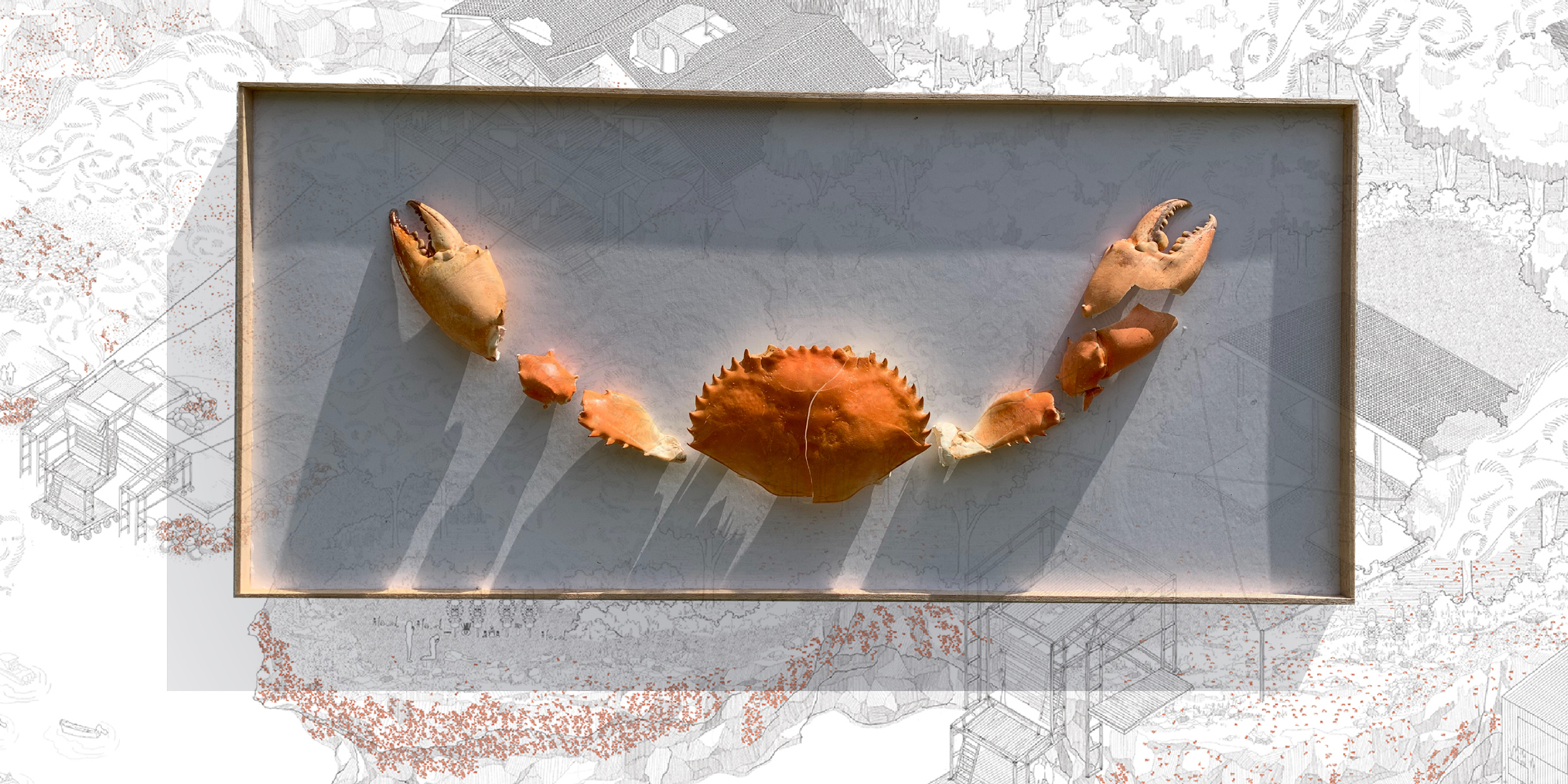
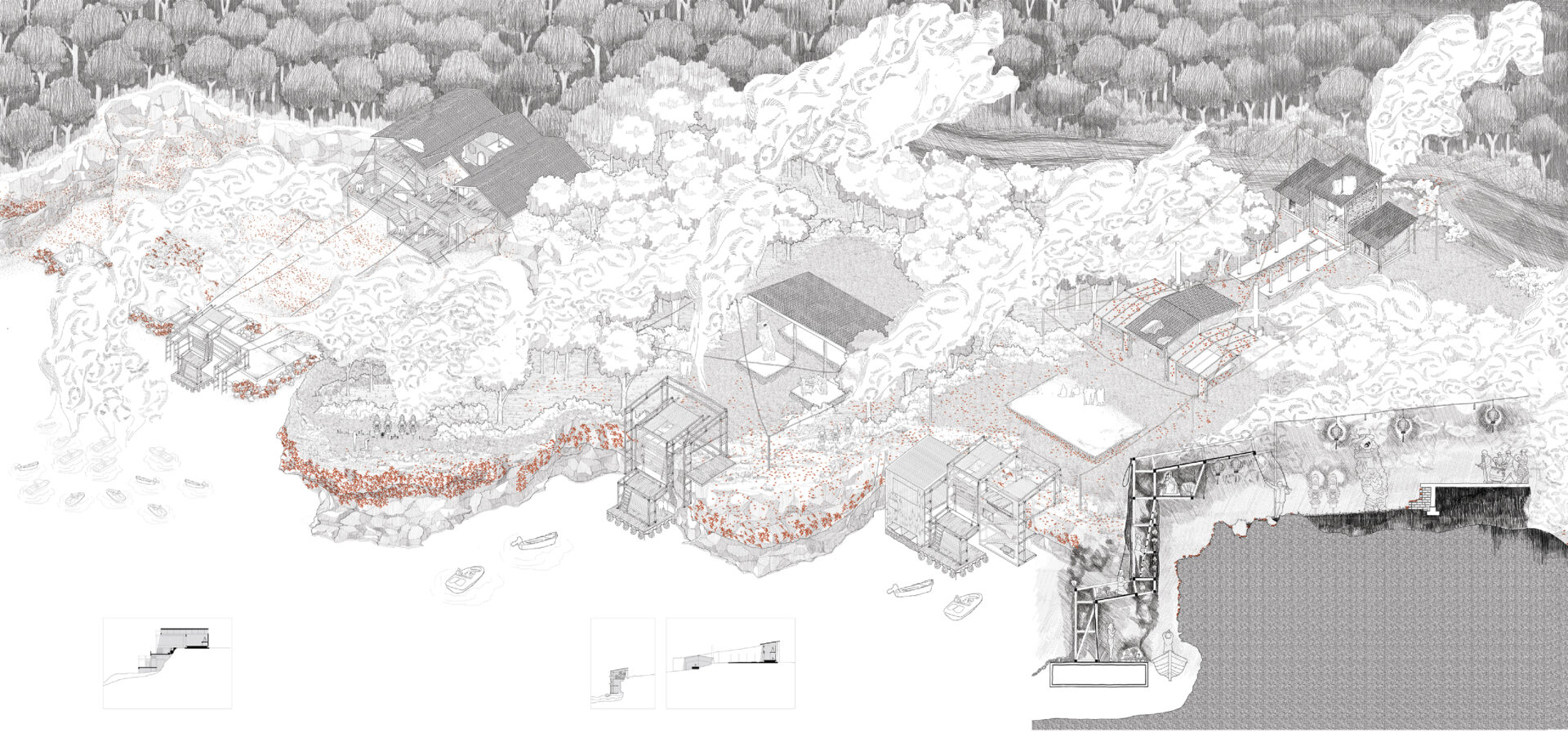
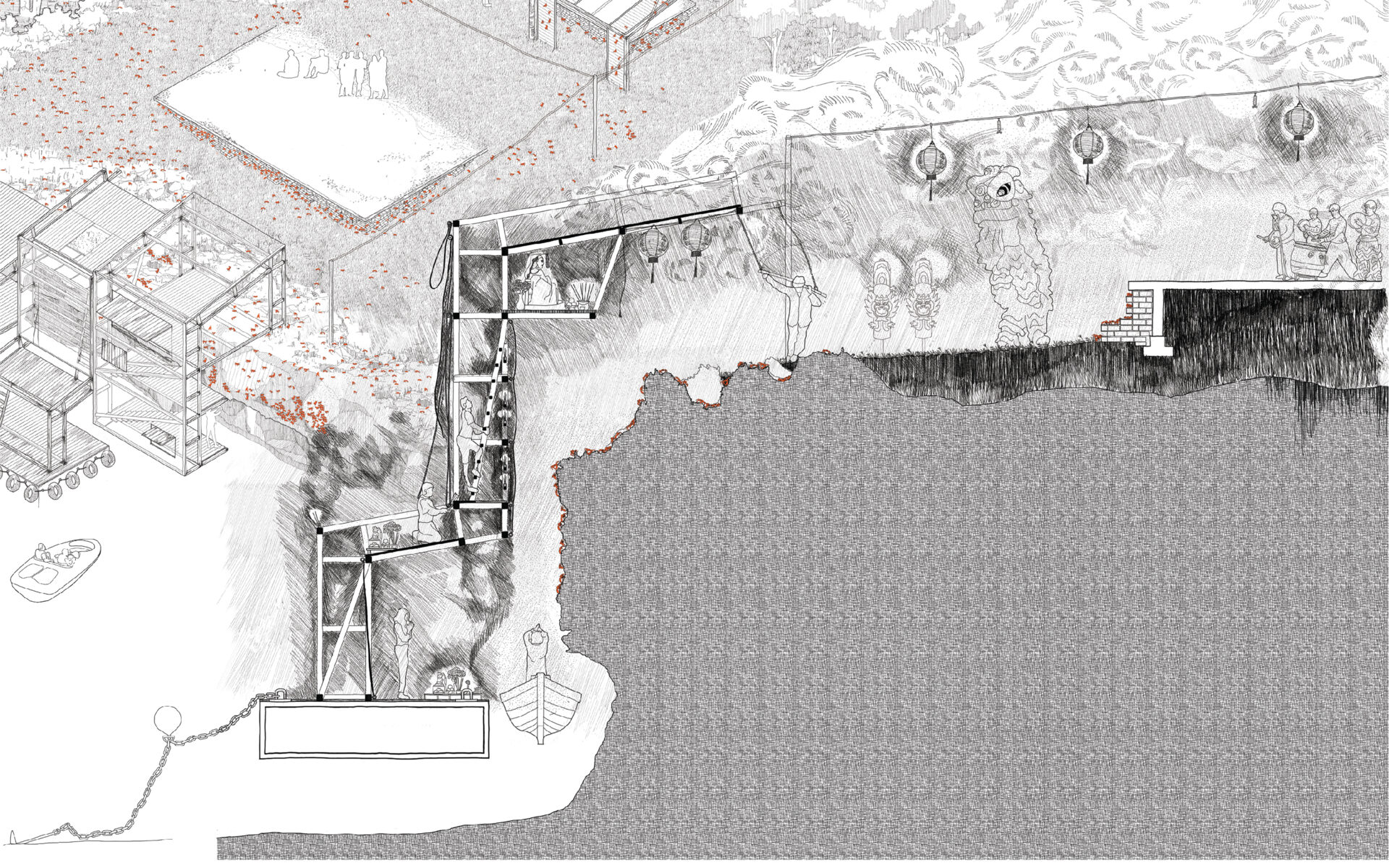

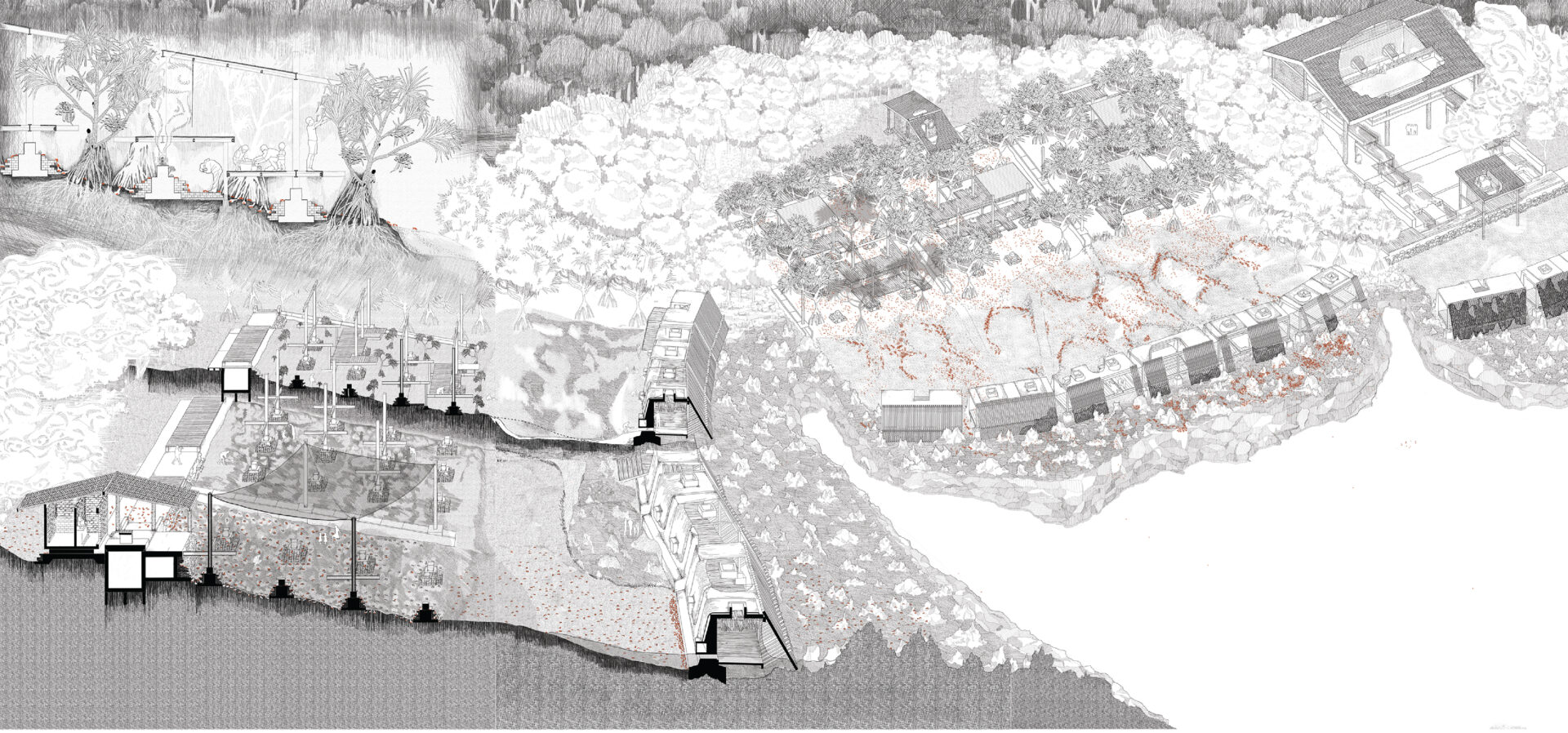
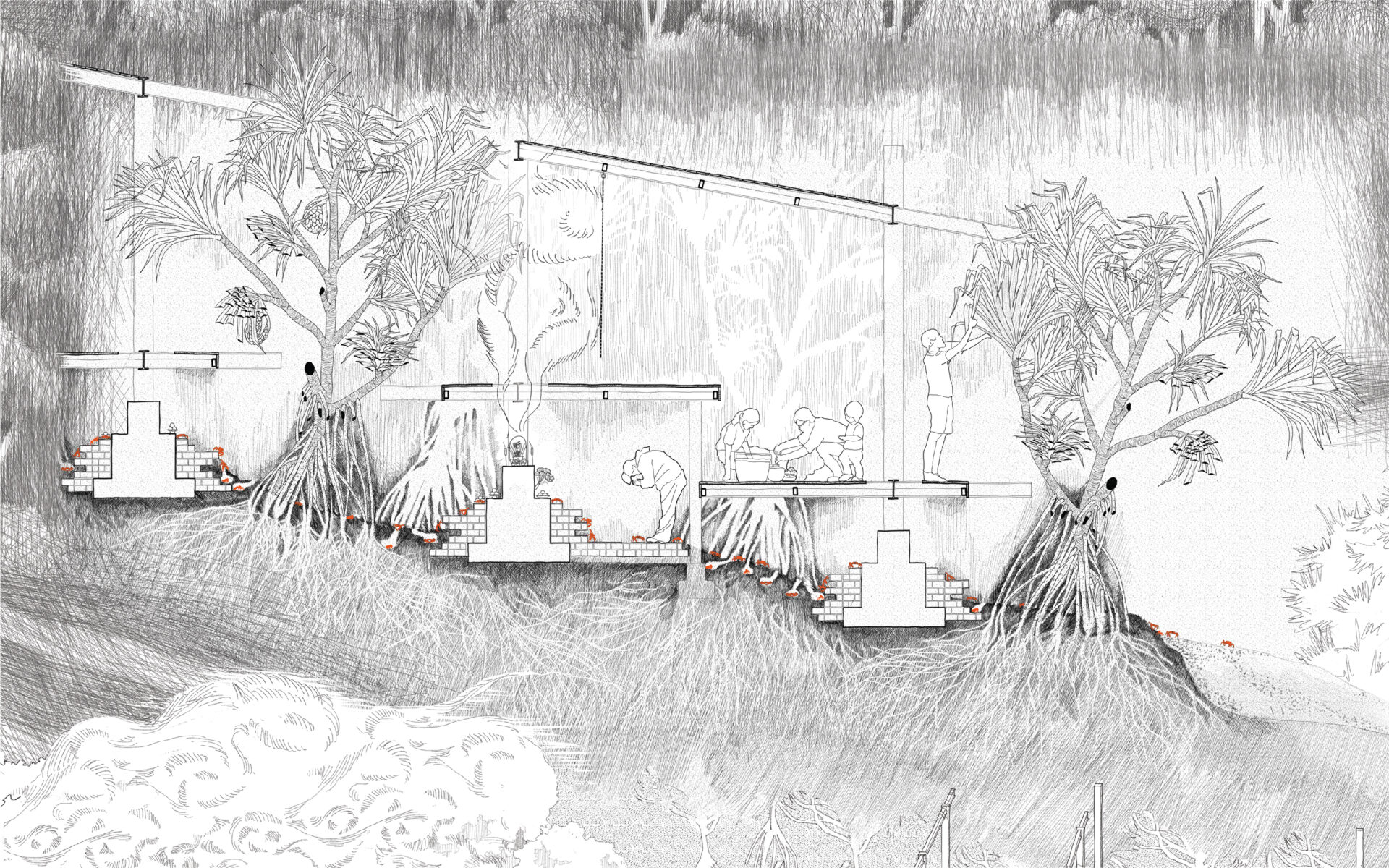

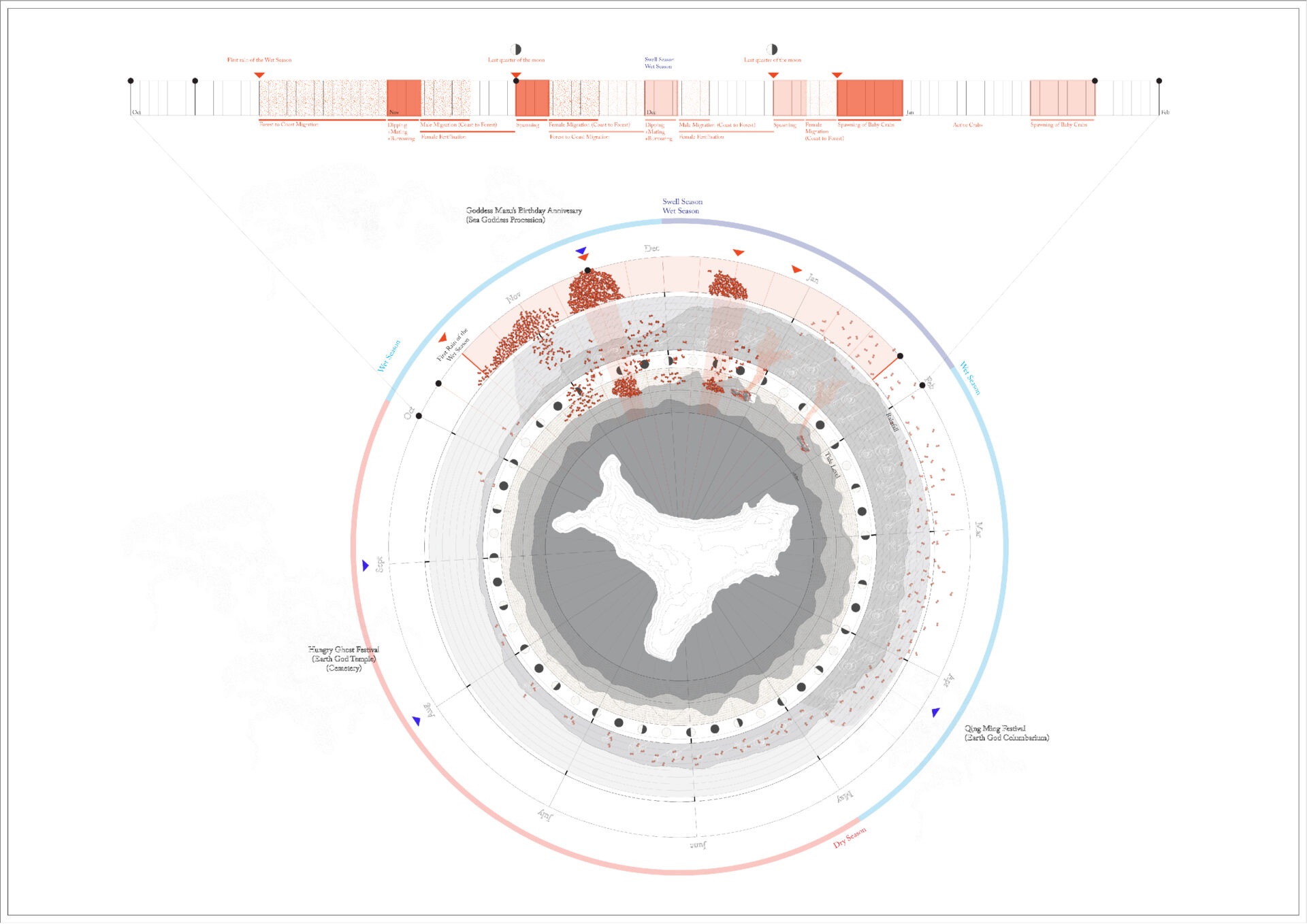
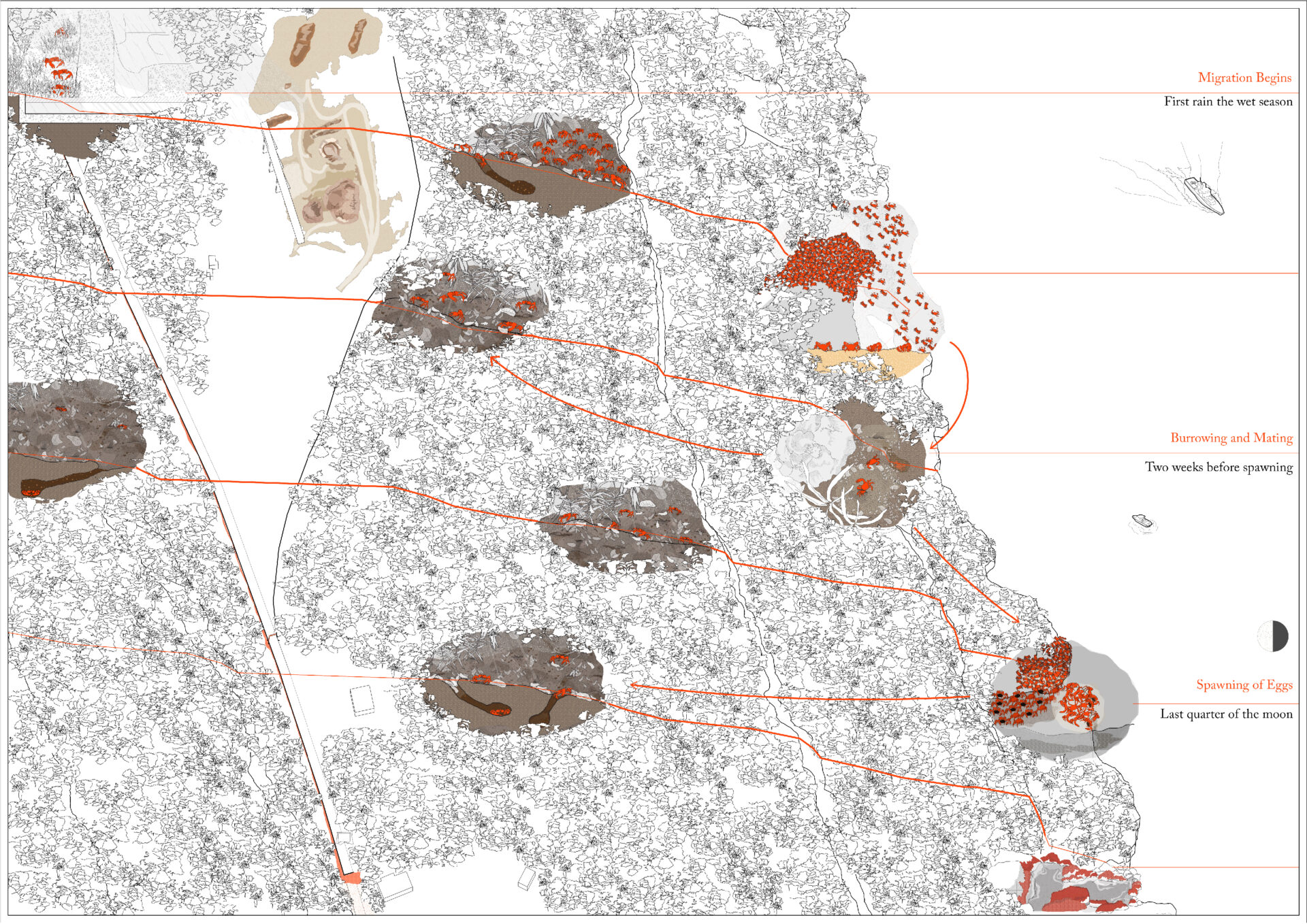
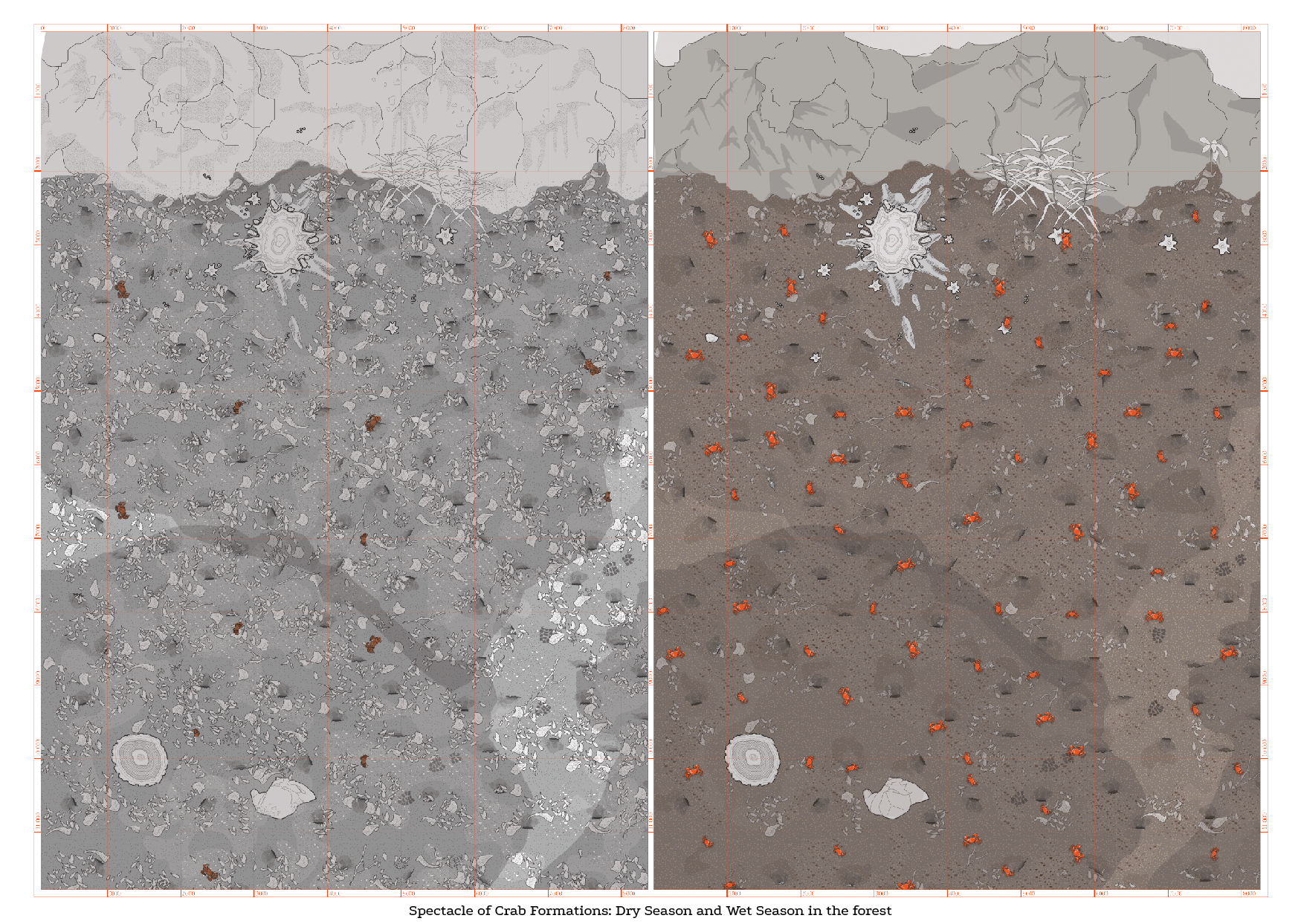

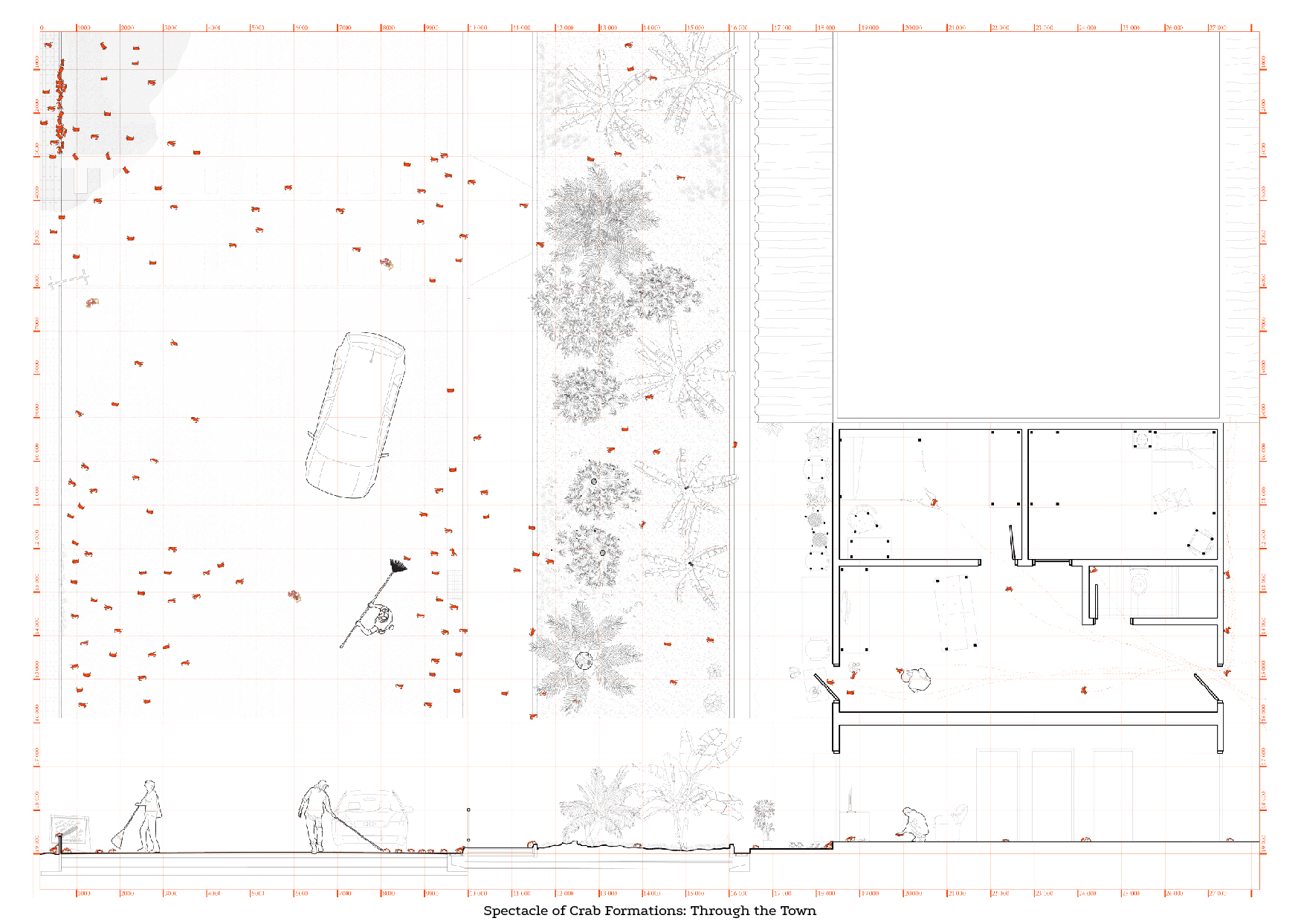
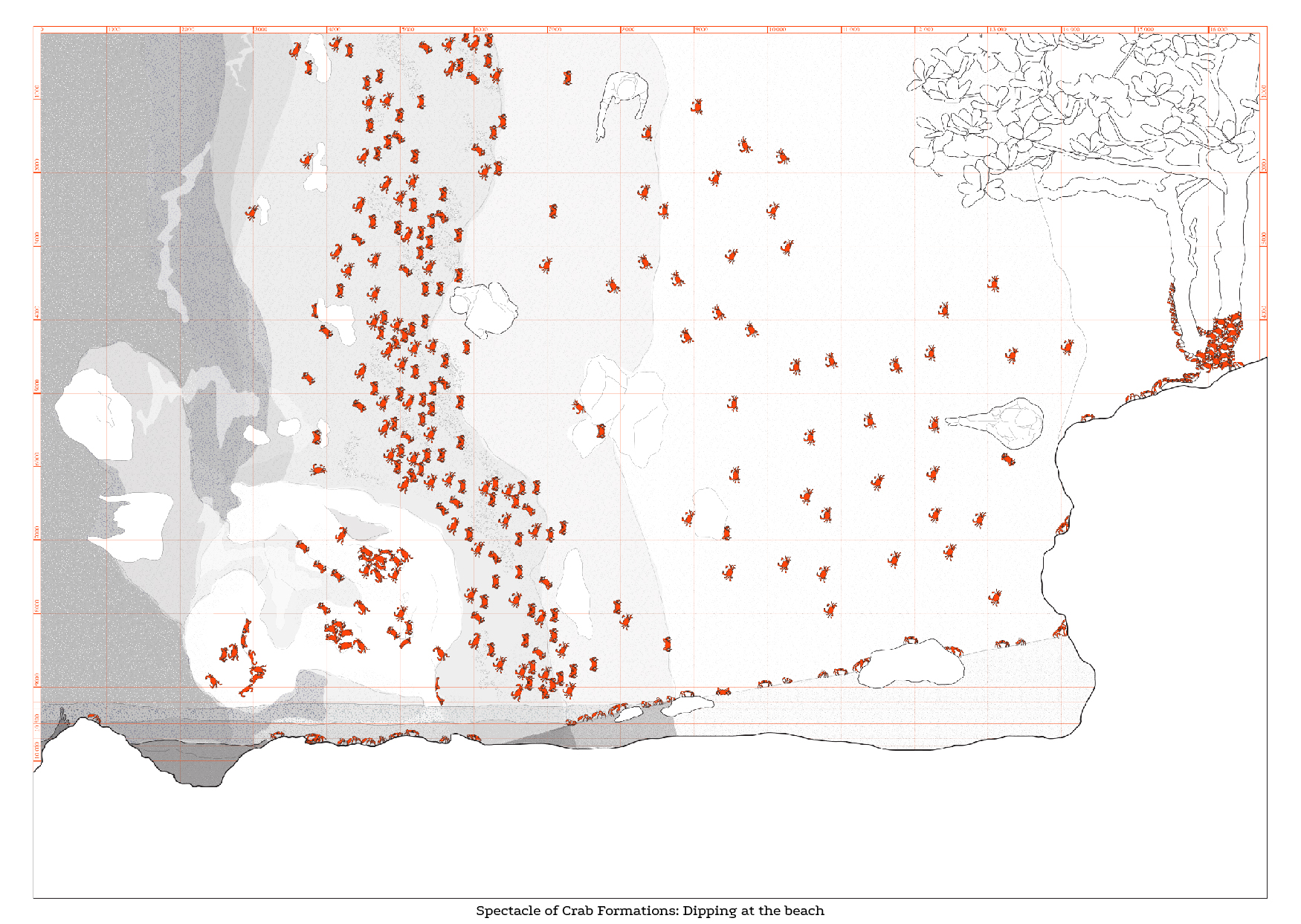
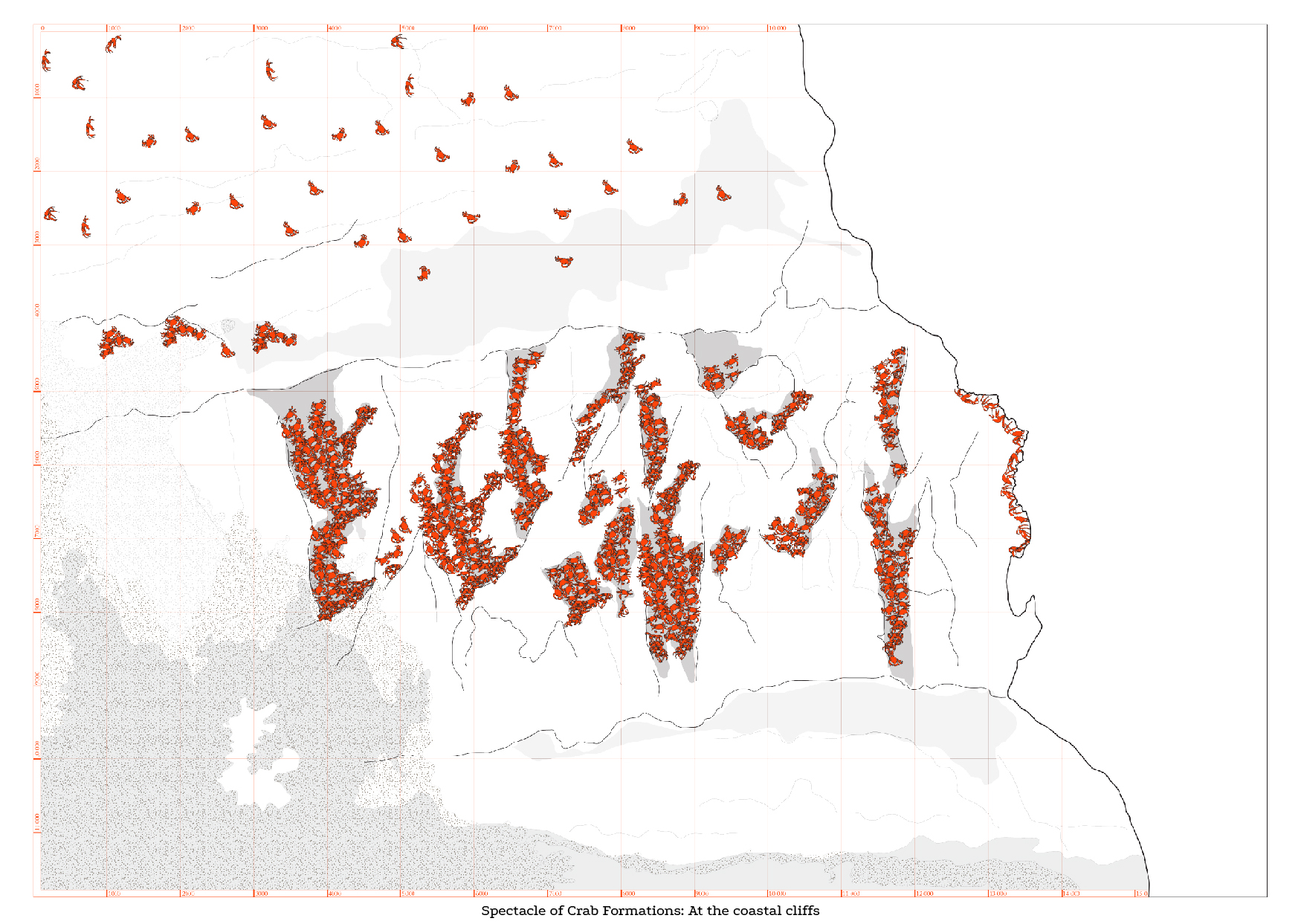
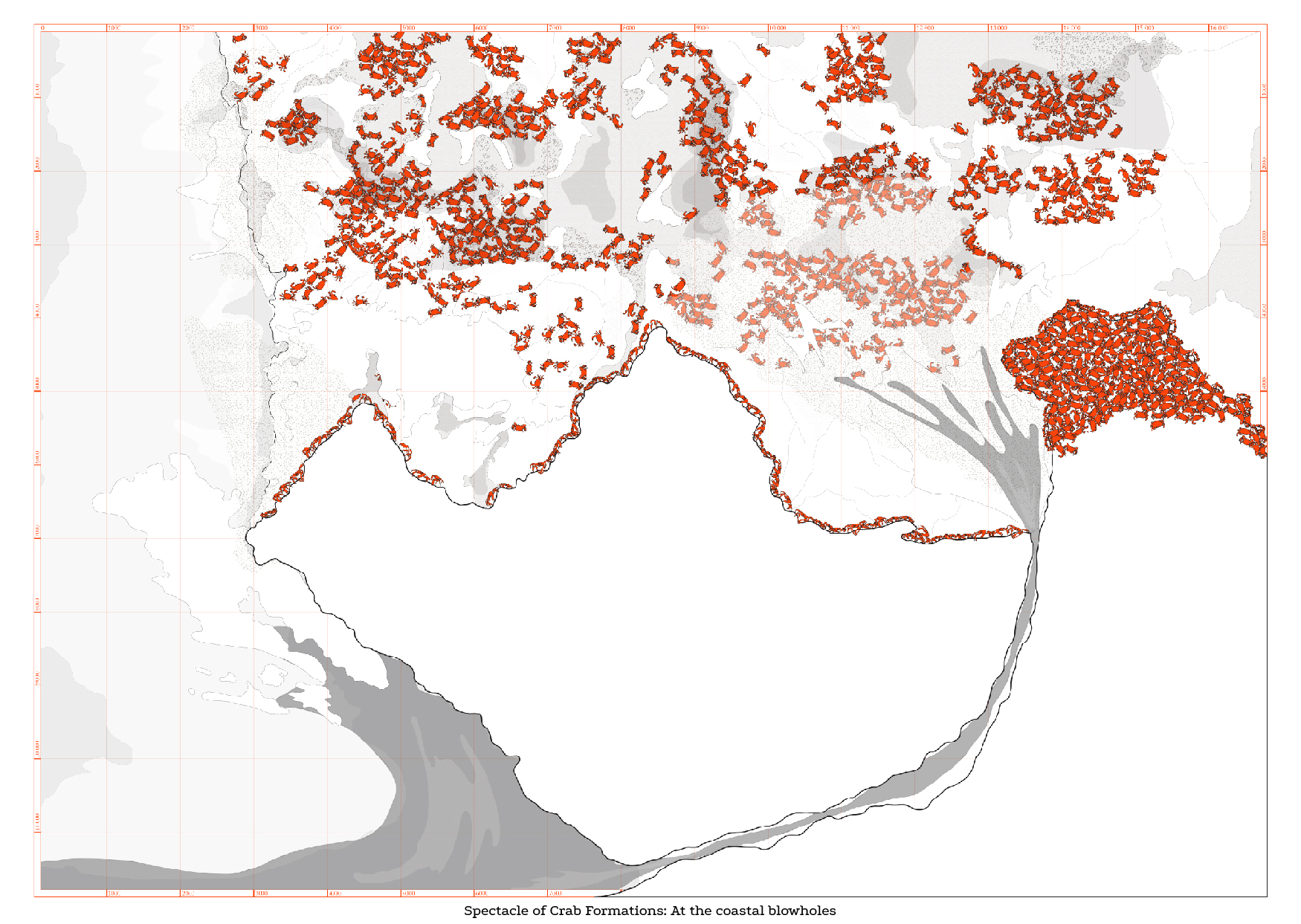
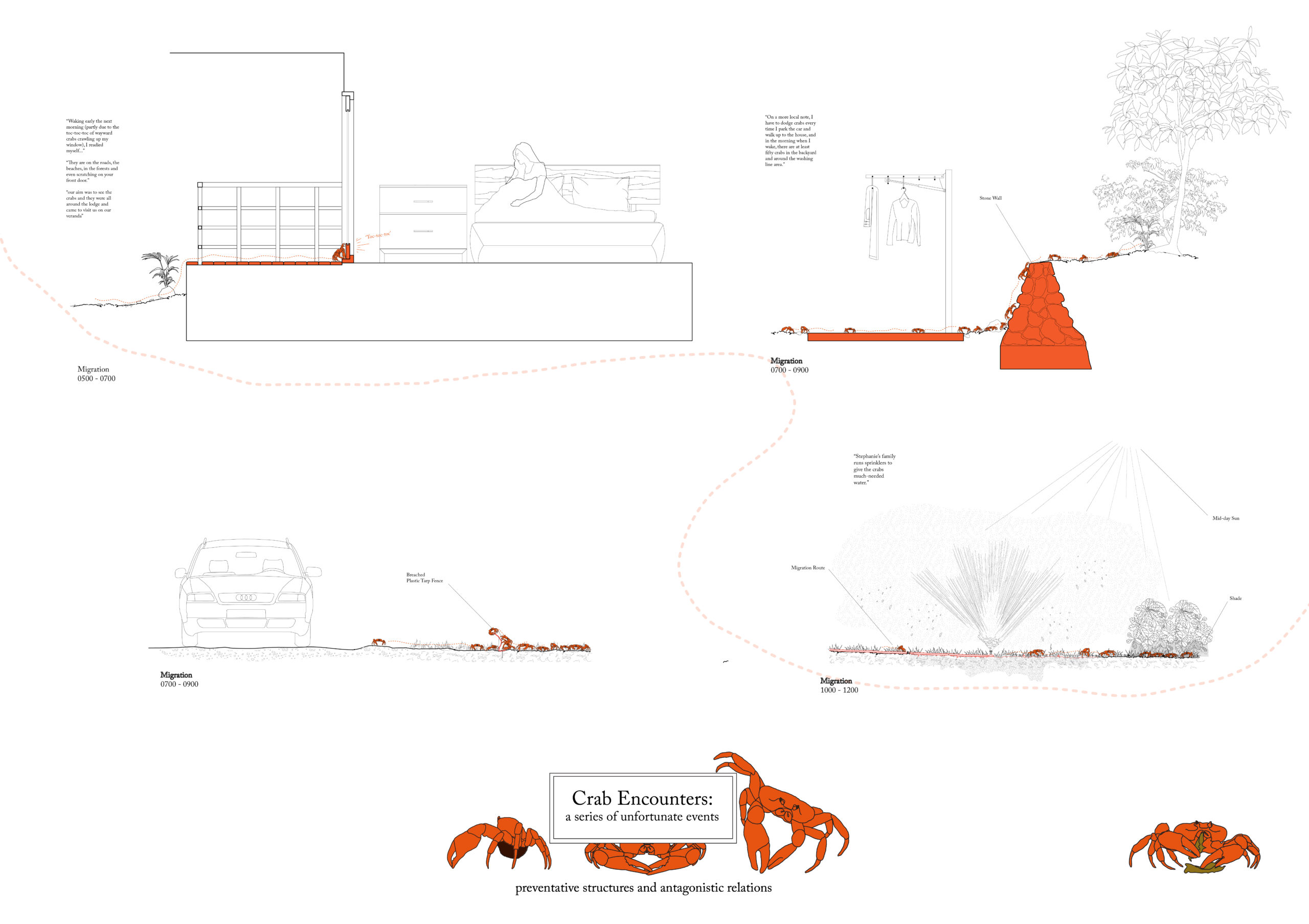
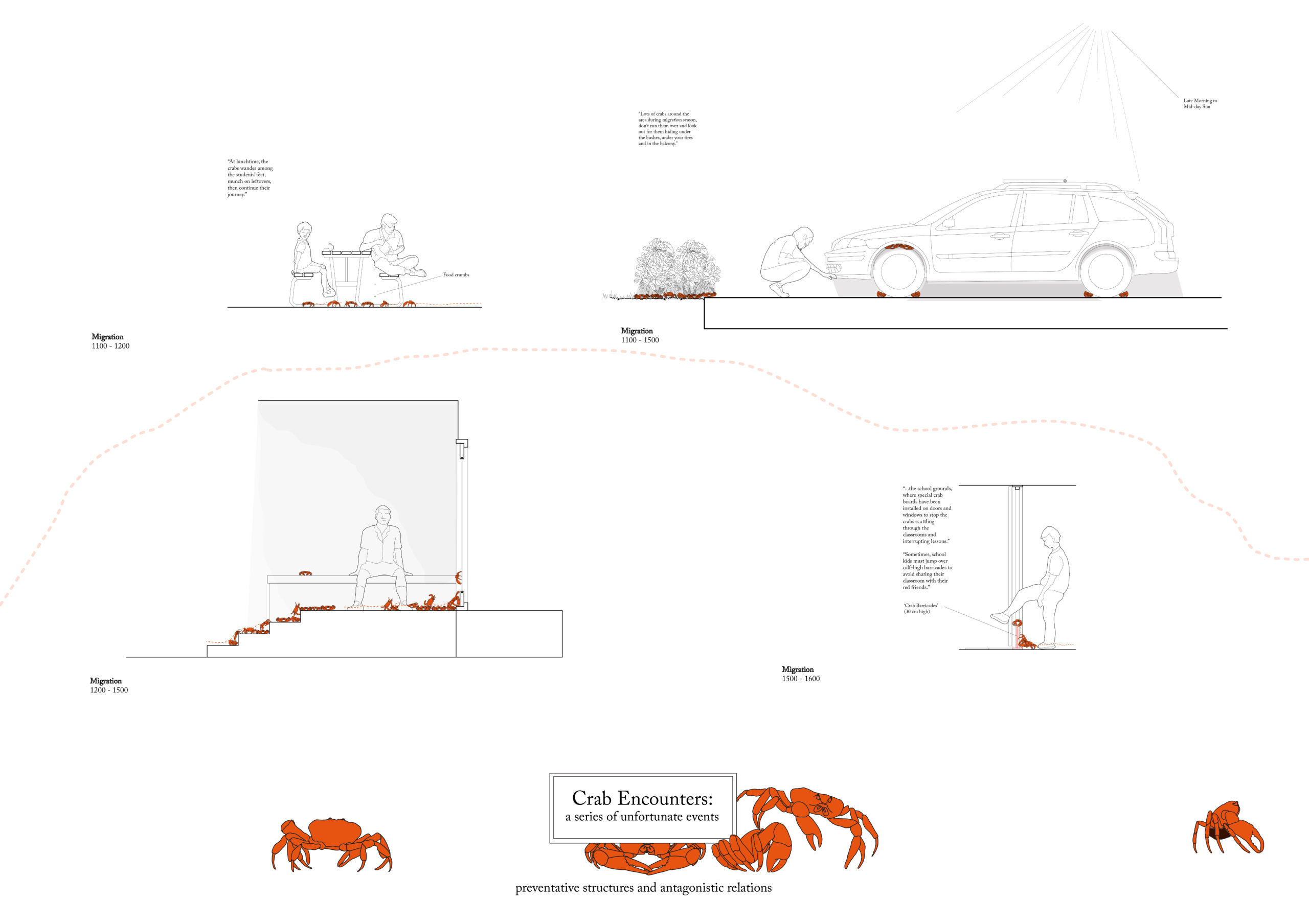
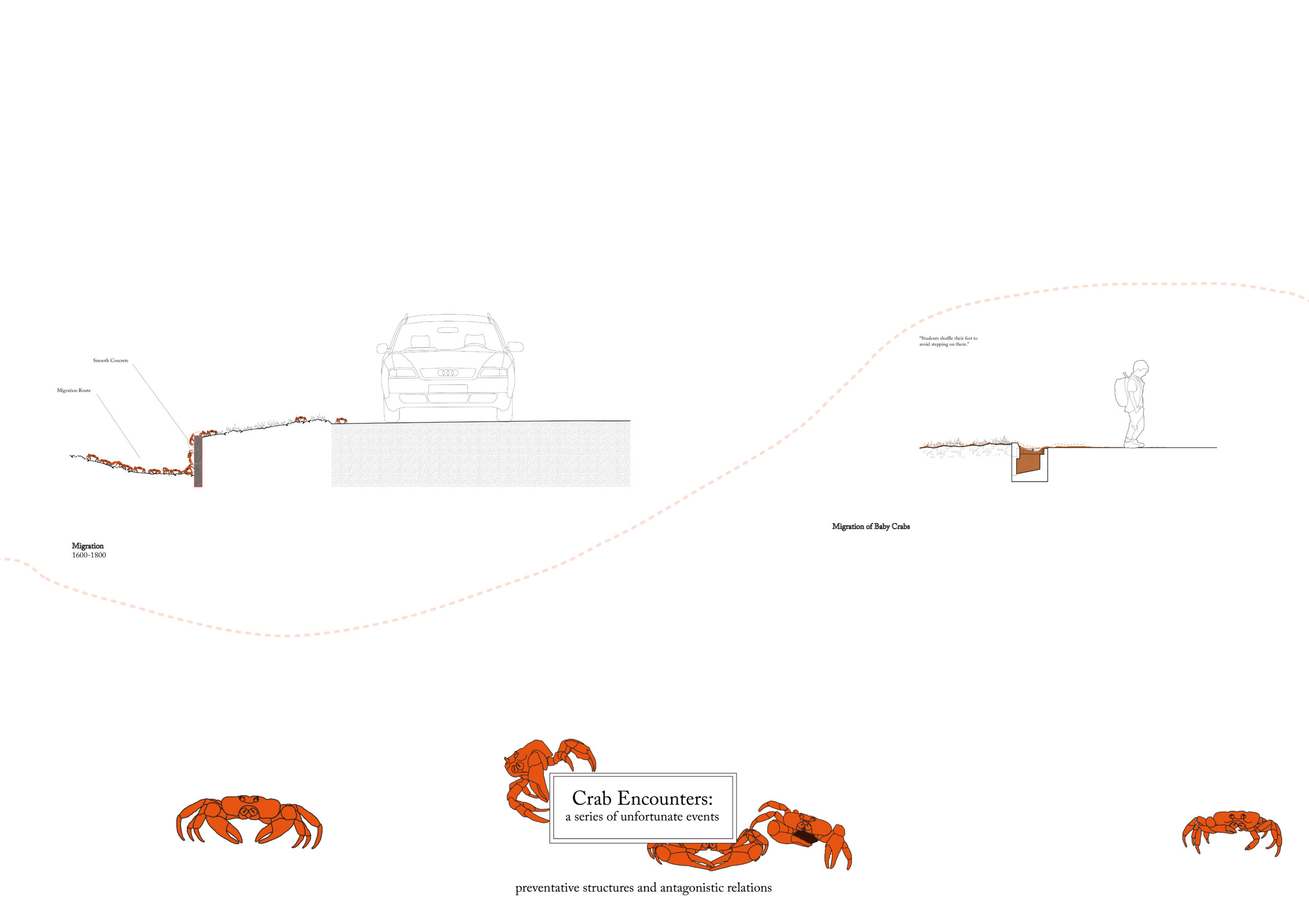

Supervisor's comments:
Emma’s interest in Christmas Island, a place she had not visited, results in 120 days, a thesis which explores the limits of architecture with remote sites and subjects. The distinctive spectacle of the island’s red crab is leveraged in a temporal and shape-shifting architecture – festival- and time-based – centred around the crabs’ mating and migratory schedules. The challenges of reading a site from afar, coupled with the balancing of fact, fiction and speculation, are intriguingly demonstrated in the weaving of the biological crab narrative with two island-specific mythical rituals. It advances significant ideas about remote research, while obliquely critiquing architecture’s relationship with its non-human others.
- Assoc. Prof. Lilian Chee (Dr.)